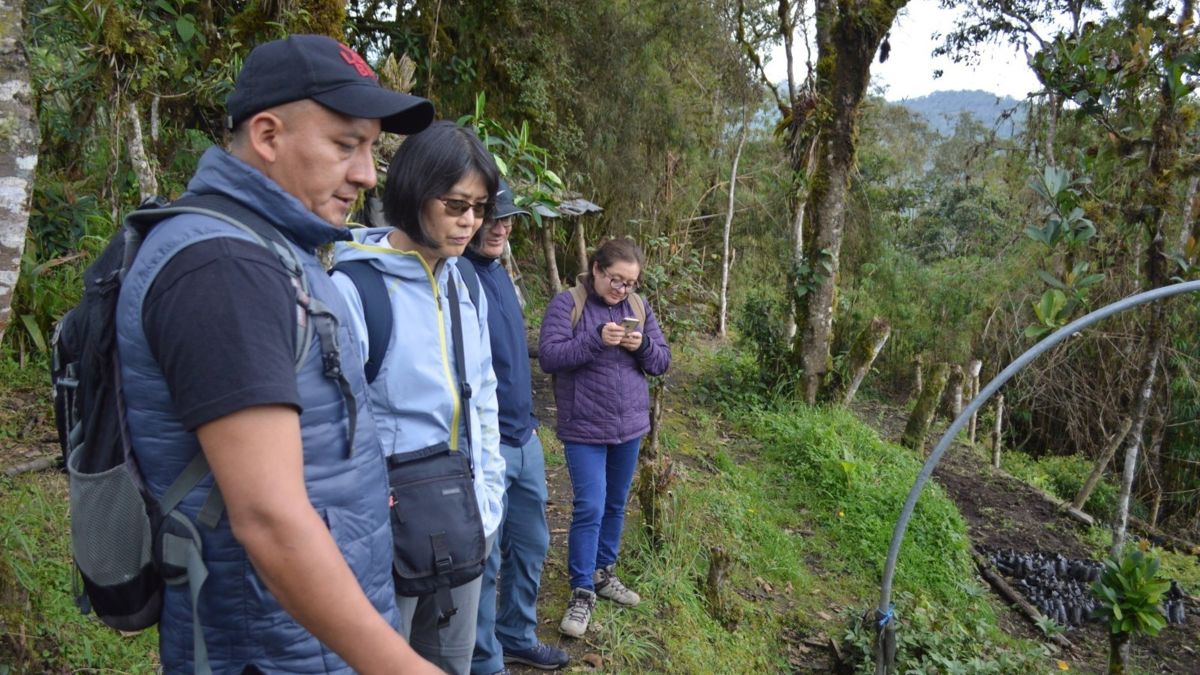
Main menu
Main menu

CEPF is a joint initiative of l’Agence Française de Développement, Conservation International, the European Union, Fondation Hans Wilsdorf, the Global Environment Facility, the Government of Japan and the World Bank.
Visitez le site français コア情報の日本語翻訳を読むOr use Google Translate to translate the English site to your language:
GTranslate
As part of the Critical Ecosystem Partnership Fund’s "Improved conservation in biodiversity hotspots by advancing gender equality" project, funded by the Government of Canada, Dorothy Uy, Project Officer of Global Affairs Canada, visited Ecuador on January 21, 2025, to learn about the actions being taken by CEPF grantees. CEPF is working with Fundación Futuro Latinoamericano as its regional implementation team in Ecuador, which is part of the Tropical Andes Biodiversity Hotspot. In addition to the funding from the Government of Canada, CEPF’s current phase of conservation action in Ecuador is made possible thanks to the financing of the German Government through KFW.
During her visit, Dorothy learned about various conservation experiences in the Awá-Cotacachi-Illinizas Corridor, one of the most biodiverse areas in the country. The three projects visited are located in the province of Pichincha, on the outskirts of the city of Quito. Dorothy had the opportunity to learn about the work of the Aves y Conservación Foundation, the Fundación Jambatu, and the Yunguilla Corporation. These organizations are all conducting projects that are essential for community strengthening and the conservation of critical ecosystems. They have implemented sustainable practices that especially encourage the participation of women and young people in their activities.
During her visit, Dorothy interacted directly with local communities. In the community of Alambi, she learned about the work of the women's group "Raíces Nativas," which collaborates with the Aves y Conservación Foundation in strengthening the group's capacities. Their focus is on the production of native plants for habitat restoration, mainly for the Endangered black-breasted puffleg (Eriocnemis nigrivestis).
In the community of Yunguilla, Dorothy learned about the work done for forest conservation and the implementation of sustainable alternatives for community development. Germán Collaguazo, technical project coordinator of the Yunguilla Coporation, highlighted the importance of Canadian funds to give continuity to the work of territory conservation. "The support of Canada, combined with the financing of the German government, will allow us to improve local capacities, raise awareness and strengthen joint work between communities, local authorities and environmental organizations," said Germán.

One of the key issues during the visit was the emphasis on the integration of gender equality in the projects. "It is very significant to see how projects not only contribute to conservation but also promote the active participation of women, from decision-making to the implementation of activities on the ground," Dorothy said. "These projects are clear examples of how the integration of gender equality is essential to achieve lasting and effective results."
With the support of Canadian funds, the projects will strengthen the participation of women in key areas of conservation, providing them with training opportunities and promoting their leadership in the communities.
Dorothy Uy's visit underscores the importance of international funding in the implementation of conservation strategies and Canada's commitment to Ecuador's biodiversity. As CEPF grantee projects progress, local communities continue to be crucial allies in the protection of the country's most fragile ecosystems. The results of previous CEPF investments in the country—such as the preservation of critical habitats, the strengthening of local capacities and the implementation of sustainable projects—demonstrate the success of international collaboration in conservation, and the support of the Ministry of Environment Water and Ecological Transition (MAATE) and other partners strengthens the efforts to advance towards a more sustainable and resilient future, where conservation and local development are effectively intertwined.